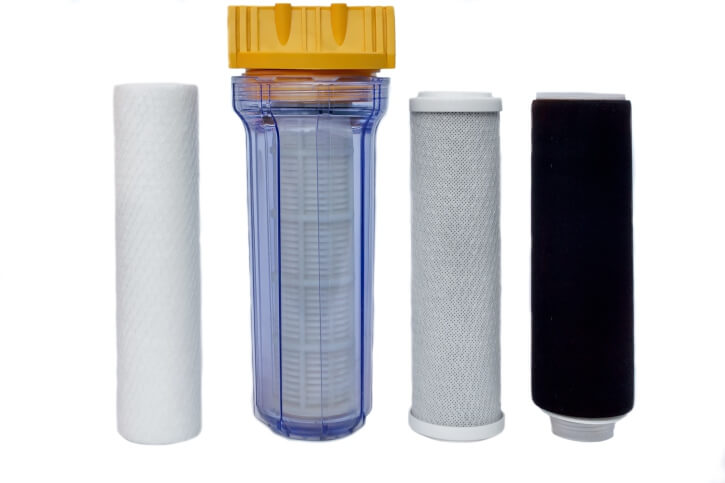
Water Filtration: Whole House or Point of Use?
No matter what type of water filtration solution you’re considering, at some point you’ll have to decide: Do you want to treat all the water that enters the household or only water used at select locations?
First Things First
The first thing to master is the lingo. Whole-house filtration systems are often referred to as point-of-entry (POE) systems, because the primary treatment equipment is installed inside near to the point where the main line enters the home, whether that line comes from the public water utility or your own well system’s pressurized tank.
Systems that filter water where it’s consumed or utilized are called point-of-use (POU) systems. Smaller inline units fit under the sink or are plumbed to feed select faucets, refrigerators, shower heads, etc. Counter top models generally sit on the counter and connect to the primary faucet, while faucet-mounted devices attach to select faucets. In each instance, these units process all the water that passes through them. Free-standing devices such as pour-through filtration pitchers or compact filtration tanks require your intervention. You have to draw water and pour it into the unit, so it can be filtered before use.
Advantages & Disadvantages
Whole-house (POE) systems offer a number of advantages. Since all the water is treated, quality is consistent throughout the house, whether you’re brushing your teeth at the bathroom sink or filling a water bottle from the kitchen faucet. The water you use for showering and bathing is as pure as the water you use for cooking.
For many, the biggest plus is convenience. A single whole-house system means you only have one filter to replace, which reduces hassles and makes maintaining water quality easier, especially if your household uses high volumes of water. The greatest drawback is cost, since the systems are larger and therefore more expensive to purchase, install and maintain. Some filtration systems discharge significant volumes of unusable water down the drain, which some homeowners find wasteful.
Point-of-use (POU) systems also offer advantages. Compact units are installed only at key locations, so you get to choose whether you want to filter all water at every faucet in the house or only in the kitchen.
The compact units are more affordable to install, and the flexible, customized approach appeals to many homeowners, particularly those opting for their first installed filtration devices. The downside for many is the need to regularly change multiple filters throughout the house to maintain water quality in the targeted locations.
Bottom Line
The most popular in-home water filtration systems utilize carbon filters or reverse osmosis technology supplemented with carbon filtration. Both whole-house and point-of-use systems are available in a range of sizes, capacities and price points, which means you’ll be able to find a system that suits your budget and performance needs.